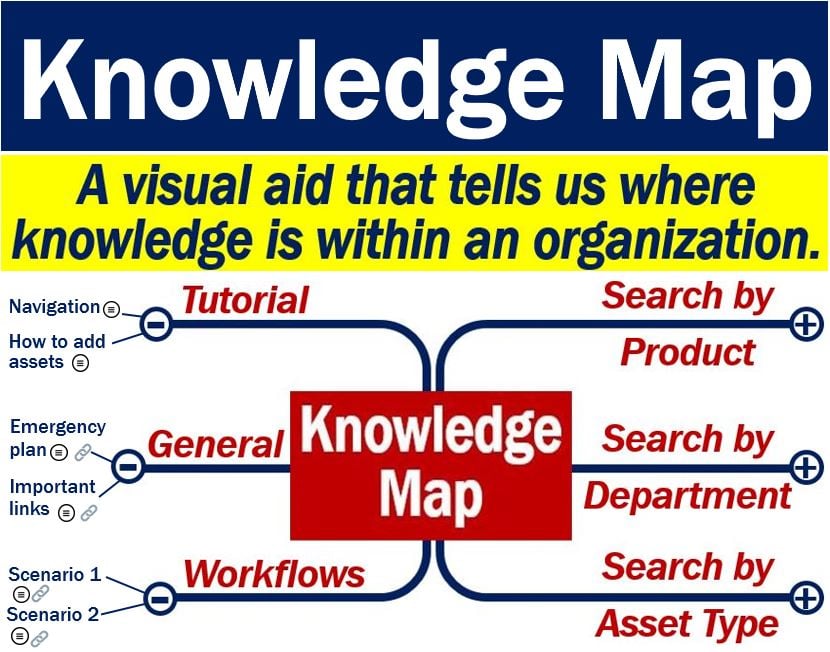A knowledge map is a map, i.e., a visual aid, that shows where knowledge is within a company or organization. It also shows us how to find people with the most expertise. We sometimes refer to it as an inventory of knowledge. Hence, it is an inventory of a company’s external or internal repositories or sources of knowledge or information. When the word ‘company’ appears in this article, it also includes ‘organization.’
The sources that the knowledge map refers to include databases, documents, and recordings of best practices or activities. The sources may also include files or web pages.
Knowledge map – why use one?
When dealing with huge quantities of complex information, it is impossible to be an expert in every field.
Having a simple tool, therefore, for locating people within a company who have certain skills, makes sense. Not only does it save time, but it is also efficient.
Rather than having to try to understand subjects you have no expertise in, use the knowledge map. Consult the map because it can direct you to somebody who is an expert.

Knowledge maps – other benefits
Knowledge maps are very powerful tools to inventory a company’s critical knowledge. They can also pinpoint areas within the organization that may be at risk.
Sometimes, the simple act of creating a knowledge map shows up the weak links. It may also reveal bottlenecks in the flow of data and knowledge.
By specifying precisely how knowledge flows through the company, people can find improvement opportunities.
In other words, they can make specific adjustments to make sure that the right knowledge reaches the right individuals. Also, that knowledge can reach those individuals at the right point in the process.
Regarding the benefits for organizations that map their knowledge, APQC.com says:
“Organizations that map their knowledge are significantly more likely to identify and address barriers to knowledge sharing and expand accountability for *KM beyond the KM core team.”
*KM stands for Knowledge Management. Knowledge Management refers to the strategies and processes that companies use to detect, capture, leverage, structure, and share their intellectual assets.
